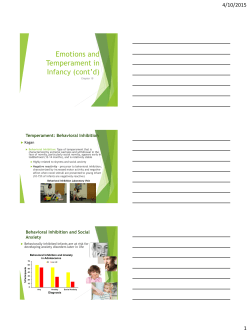
P1 P2 P3 - Department of Drug Design and Pharmacology
FACULTY OF HEALTH AND MEDICAL SCIENCES UNIVERSITY OF COPENHAGEN Discovery of Peptidic Anti-cobratoxins by" Next Generation Phage Display Andreas H. Laustsen1, Timothy Lynagh1, Jens Kringelum2, Anders Christiansen3, Jónas Johannesen1, Mikael Engmark2, Stephan A. Pless1, Lars Olsen1, Julián Fernández4, José María Gutiérrez4, Bruno Lomonte4, Brian Lohse1 1Department of Drug Design and Pharmacology, University of Copenhagen 2Department of Systems Biology, Technical University of Denmark 3Department of Micro- and Nanotechnology, Technical University of Denmark, Denmark 4Instituto Clodomiro Picado, Facultad de Microbiología, Universidad de Costa Rica, San José, Costa Rica P2 P3 α-cobratoxin C 1 2 3 4 w1 w2 w3 α-cobratoxin + P3 α-cobratoxin Current P1 α-cobratoxin + P2 α-cobratoxin Current Antivenoms are still being produced by animal immunization protocols and are therefore associated with high immunogenicity for human recipients [1]. Here we report the first step towards discovery of synthetic antitoxins that could be used for development of a fully synthetic antivenom against neurotoxin from cobras (Naja genus). α-cobratoxin + P1 α-cobratoxin Current The future of antivenoms – synthetic antitoxins Figure 1: Naja kaouthia by S. Ganguly 2012 C 1 2 3 w1 w2 w3 C 1 2 3 4 5 6 w1w2w3 Figure 4: Peptides prevent α-cobratoxin from inhibiting nicotinic acetylcholine receptors in Xenopus laevis oocytes in two electrode voltage clamp (TEVC) experiments. 100 µM acetylcholinegated currents were recorded alone (control, “C”); in the continued presence of either 40 nM αcobratoxin alone (light blue bars, “1-3”) or 40 nM α-cobratoxin and 100 µM peptide (dark blue bars, “1-3”); and then alone again (wash, “w1-w3”). P1 and P3 prevent the inhibition caused by α-cobratoxin, whereas P2 enhances both the onset and wash-out of inhibition. Kd = 20 μM Cross-reactive peptides for pan-specific antivenom Given that other elapid venoms are rich in α-neurotoxins [3,4], the identified inhibitor may potentially provide protection against the neurotoxic effects exerted by α-neurotoxins present in a broad range of venoms. P01391 A Figure 2: The high lethality of Naja kaouthia (Monocled cobra) venom is due to the high amount of α-neurotoxins, with the most abundant and toxic component being α-cobratoxin [2]. Kd was determined by Isothermal Calorimetry (ITC). Illustration of binding (binding place unknown). 1 0 1 2 3 Rounds of Panning 4 Ca2+ Ca2+ nACh receptor M13 B Peptide Extracellular Intracellular Na+ Na+ Ca2+ Extracellular Ca2+ peptide nACh receptor C 1 53 5 7 9 11131517192123 Clone number α-cobratoxin α-cobratoxin + P1 Current P1 P2 P3 Intracellular Inhibition by toxin α-cobratoxin + P3 Current 2 1,8 1,6 1,4 1,2 1 0,8 0,6 0,4 0,2 0 Na+ α-cobratoxin Current 3 α-cobratoxin Control Abs, 490 nm Abs, 490 nm 4 Na+ P1 prevents inhibition P3 prevents inhibition Figure 3: ELISA tests of panning rounds and selected monoclonal phage colonies. Phage display screening coupled to both normal sequencing of hits and next generation sequencing of panning rounds lead to the discovery of 3 peptides that interact with α-cobratoxin. Figure 5: Schematic overview of physiological mechanism. A: α-cobratoxin inhibits the nicotinic acetylcholine receptor (nAChR) at the endplate of muscle fibers leading to flaccid paralysis. B: Peptides P1 and P3 bind to α-cobratoxin and prevent the toxin from inhibiting the nAChR. C: Measured ion currents through the nAChR in Xenopus laevis oocyte two electrode voltage clamp (TEVC) assay showing that peptides P1 and P3 prevent inhibition of ion current flow. References Contact information [1] Laustsen, A.H, Engmark, M., Milbo, C., Johannesen, J., Lomonte, B., Gutiérrez, J.M., Lohse, B., 2015. From Fangs to Pharmacology: The future of antivenoms. Submitted to PLoS Neglected Tropical Diseases. [2] Laustsen, A.H., Gutiérrez, J.M., Lohse, B., Rasmussen, A.R., Fernández, J., Milbo, C., Lomonte, B., 2015b. Snake venomics of monocled cobra (Naja kaouthia) and investigation of human IgG response against venom toxins. Toxicon 99, 23–35. [3] Laustsen, A.H., Gutiérrez, J.M., Rasmussen, A.R., Engmark, M., Gravlund, P., Saunders, K.L. Lohse, K.L., Lomonte, B., 2015. Danger in the reef: Proteome, toxicity, and neutralization of the venom of the olive sea snake, Aipysurus laevis. Submitted to Toxicon. [4] Laustsen, A.H., Lomonte, B., Lohse, B., Fernández, J., Gutiérrez, J.M., 2015. Unveiling the nature of black mamba (Dendroaspis polylepis) venom through venomics and antivenom immunoprofiling: Identification of key toxin targets for antivenom development. Journal of Proteomics 119, 126–142. andreas.laustsen@sund.ku.dk / (+45) 2988 1134 Acknowledgement Department of Drug Design and Pharmacology, University of Copenhagen, Instituto Clodomiro Picado, University of Costa Rica, Department of Systems Biology, Technical University of Denmark, Department of Micro- and Nanotechnology, Technical University of Denmark, Denmark, Det Frie Forskningsråd, Lundbeckfonden, Brødrene Hartmanns Fond, Novo Nordisk Fonden, Drug Research Academy (University of Copenhagen), Dansk Tennis Fond Oticon Fonden, Knud Højgaards Fond, Rudolph Als Fondet, Henry Shaws Legat, Læge Johannes Nicolai Krigsgaard of Hustru Else Krogsgaards Mindelegat for Medicinsk Forskning og Medicinske Studenter ved Københavns Universitet, Lundbeckfonden, Torben of Alice Frimodts Fond, Frants Allings Legat, Christian og Ottilia Brorsons Rejselegat for Yngre Videnskabsmænd og -kvinder, and Fonden for Lægevidenskabens Fremme.
© Copyright 2025









